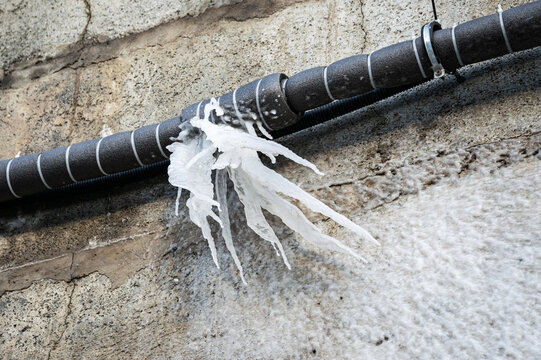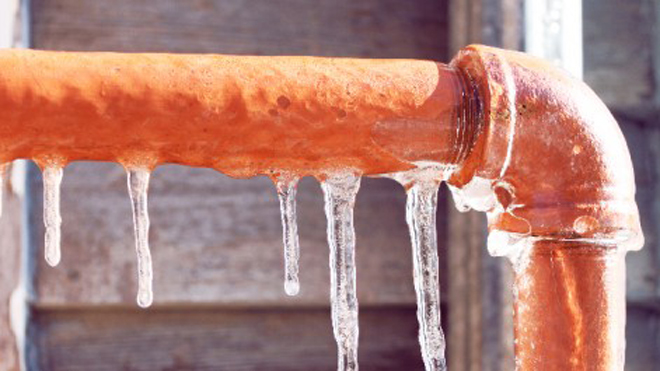Tips for Preventing Frozen Plumbing in Cold Weather: Professional Advice
Tips for Preventing Frozen Plumbing in Cold Weather: Professional Advice
Blog Article
Do you find yourself interested in ideas around 6 Ways to Prevent Frozen Pipes?

Winter can wreak havoc on your pipes, specifically by freezing pipelines. Below's just how to stop it from happening and what to do if it does.
Introduction
As temperature levels decline, the threat of icy pipes increases, potentially resulting in costly repair work and water damages. Understanding exactly how to prevent icy pipelines is vital for house owners in cold environments.
Recognizing Frozen Pipes
What causes pipelines to ice up?
Pipes ice up when revealed to temperatures below 32 ° F (0 ° C) for expanded durations. As water inside the pipes freezes, it increases, putting pressure on the pipe wall surfaces and potentially creating them to break.
Risks and problems
Frozen pipelines can result in water disruptions, residential property damages, and costly repair work. Ruptured pipelines can flooding homes and trigger considerable structural damages.
Signs of Frozen Pipes
Recognizing frozen pipes early can stop them from bursting.
Exactly how to recognize frozen pipes
Try to find decreased water flow from faucets, uncommon odors or noises from pipelines, and noticeable frost on revealed pipes.
Prevention Tips
Insulating susceptible pipelines
Cover pipelines in insulation sleeves or utilize warm tape to safeguard them from freezing temperature levels. Concentrate on pipes in unheated or outside locations of the home.
Home heating strategies
Keep interior rooms effectively heated, specifically areas with plumbing. Open closet doors to allow cozy air to flow around pipelines under sinks.
Protecting Outside Pipes
Yard hose pipes and outside taps
Disconnect and drain garden pipes before winter months. Install frost-proof spigots or cover outside taps with shielded caps.
What to Do If Your Pipelines Freeze
Immediate activities to take
If you suspect frozen pipes, keep faucets open to ease pressure as the ice melts. Utilize a hairdryer or towels soaked in hot water to thaw pipes gradually.
Long-Term Solutions
Architectural changes
Think about rerouting pipes away from exterior walls or unheated areas. Add extra insulation to attic rooms, basements, and crawl spaces.
Upgrading insulation
Buy high-quality insulation for pipelines, attic rooms, and wall surfaces. Appropriate insulation assists preserve constant temperatures and reduces the threat of frozen pipelines.
Conclusion
Protecting against frozen pipelines requires proactive steps and quick responses. By recognizing the causes, indications, and safety nets, property owners can shield their plumbing during cold weather.
5 Ways to Prevent Frozen Pipes
Drain Outdoor Faucets and Disconnect Hoses
First, close the shut-off valve that controls the flow of water in the pipe to your outdoor faucet. Then, head outside to disconnect and drain your hose and open the outdoor faucet to allow the water to completely drain out of the line. Turn off the faucet when done. Finally, head back to the shut-off valve and drain the remaining water inside the pipe into a bucket or container. Additionally, if you have a home irrigation system, you should consider hiring an expert to clear the system of water each year.
Insulate Pipes
One of the best and most cost-effective methods for preventing frozen water pipes is to wrap your pipes with insulation. This is especially important for areas in your home that aren’t exposed to heat, such as an attic. We suggest using foam sleeves, which can typically be found at your local hardware store.
Keep Heat Running at 65
Your pipes are located inside your walls, and the temperature there is much colder than the rest of the house. To prevent your pipes from freezing, The Insurance Information Institute suggests that you keep your home heated to at least 65 degrees, even when traveling. You may want to invest in smart devices that can keep an eye on the temperature in your home while you’re away.
Leave Water Dripping
Moving water — even a small trickle — can prevent ice from forming inside your pipes. When freezing temps are imminent, start a drip of water from all faucets that serve exposed pipes. Leaving a few faucets running will also help relieve pressure inside the pipes and help prevent a rupture if the water inside freezes.
Open Cupboard Doors
Warm your kitchen and bathroom pipes by opening cupboards and vanities. You should also leave your interior doors ajar to help warm air circulate evenly throughout your home.

I recently found that review on Prevent Frozen Pipes when scouting around the internet. Sharing is good. Helping others is fun. We appreciate your readership.
Get Quote Report this page